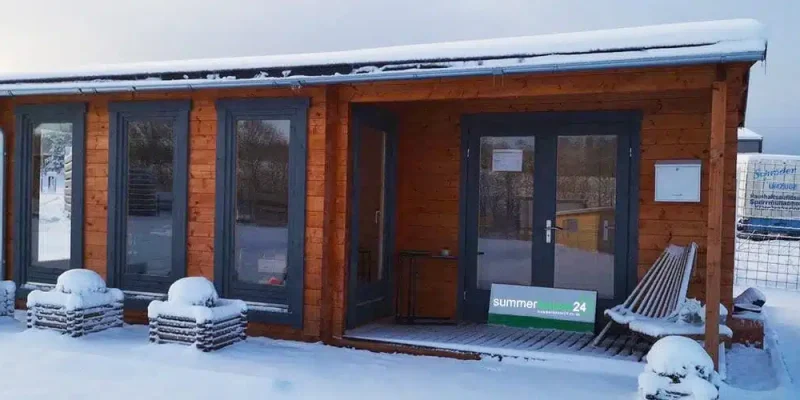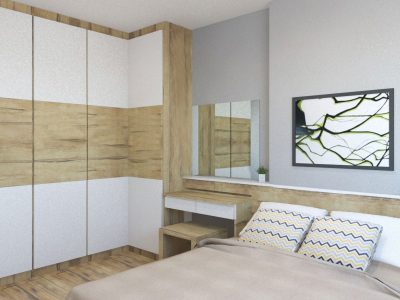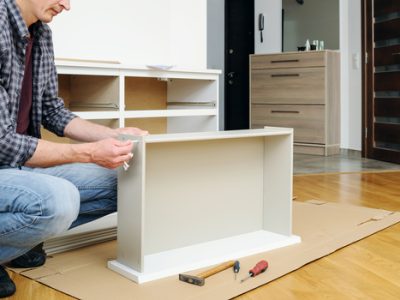The charm of staying in a log cabin during the winter months is undeniable—crackling fires, frosted windows, and a warm cup of tea while the wind howls outside. However, that same romantic setting can quickly turn uncomfortable if your cabin isn’t properly prepared for cold weather.
In the UK, where winters can be wet, windy, and increasingly unpredictable, winter-proofing log cabins is essential to ensure comfort, safety, and energy efficiency. Whether your cabin is a weekend getaway in the Lake District or a full-time home in rural Scotland, the following tips will help you stay cosy all season long.
1. Insulate for Warmth and Efficiency
Proper insulation is the backbone of any winter-ready cabin. Without it, you’ll find yourself battling drafts, high heating costs, and dampness.
- Roof and ceiling insulation: Heat rises, so insulating your cabin’s roof space is one of the most effective ways to retain warmth. Mineral wool or rigid foam boards are popular options.
- Wall insulation: If your cabin is built from solid logs, it may already offer some natural insulation. However, adding internal insulation panels or using insulated log systems can significantly improve heat retention.
- Floor insulation: Don’t forget what’s underfoot. Insulated floorboards or rugs can help keep cold from seeping in, particularly if your cabin sits on piers or stilts.
Good insulation not only keeps the heat in during winter but also helps your cabin stay cooler in the summer.
2. Check for Drafts and Seal Gaps
Even well-built log cabins can develop small gaps over time where cold air sneaks in.
- Inspect windows and doors for gaps and seal them with weather stripping or draft excluders.
- Use silicone caulk to fill small cracks in walls, corners, or joints between logs.
- For older cabins, consider upgrading to double-glazed windows, which provide better insulation and reduce condensation.
Stopping heat loss at its source reduces the strain on your heating system and keeps the interior consistently warm.
3. Prepare Your Heating System
In winter, a reliable heating source is non-negotiable. Fortunately, log cabins lend themselves well to a range of traditional and modern heating options.
- Wood-burning stoves are a favourite for good reason. They provide excellent heat and enhance the rustic feel of the cabin. Make sure the chimney is cleaned and inspected annually.
- Electric panel heaters or oil-filled radiators can be good supplemental heating, especially in bedrooms or bathrooms.
- Consider underfloor heating in tiled areas for consistent warmth underfoot.
- If your cabin is connected to the grid, smart thermostats allow for remote temperature control and increased energy efficiency.
Always have a backup plan in case of power outages—such as a gas heater or additional wood supply.
4. Protect Your Plumbing
Frozen pipes are one of the most common winter issues for cabin owners in the UK. A burst pipe can cause extensive damage, so prevention is key.
- Insulate all exposed pipes, especially those in crawl spaces, lofts, or along external walls.
- Use pipe sleeves or foam tubing to reduce the risk of freezing.
- If the cabin is only used occasionally, drain the water system before closing up for winter or keep a low-level heating system running to prevent freezing.
- Install frost protection thermostats that automatically trigger heating if the temperature drops below a certain level.
These steps can save you costly repairs and a lot of stress during cold snaps.
5. Stock Emergency Supplies
British winters are rarely extreme, but they can be unpredictable. A well-prepared log cabin should have a few essentials on hand, especially if it’s in a remote location.
- Keep an ample supply of firewood, kindling, and matches.
- Have a torch or battery-powered lantern, spare batteries, and candles ready in case of power cuts.
- Store extra blankets, thermal clothing, and bottled water.
- If the area is prone to snow or ice, consider having a shovel, grit, and emergency first aid kit.
These supplies are particularly important if the cabin is rented out to guests or used as a holiday let during the winter months.
6. Exterior Maintenance
The outside of your log cabin needs attention too.
- Clear gutters and drains to prevent water build-up and ice damage.
- Treat wooden surfaces with a weather-resistant finish to prevent rot and warping.
- Inspect the roof for any loose tiles or shingles and make necessary repairs before winter sets in.
- Trim overhanging branches that could break under snow and damage the roof or windows.
Regular maintenance not only protects your investment but also keeps your cabin looking its best year-round.
Winter in a log cabin can be wonderfully peaceful—provided you’re properly prepared. With the right insulation, heating system, and preventive measures in place, you can enjoy everything the season has to offer without worry.
As more people in the UK turn to log cabins for holiday accommodation, home offices, or countryside living, knowing how to winter-proof effectively ensures your space stays warm, safe, and inviting—no matter what the weather throws your way.








Comments